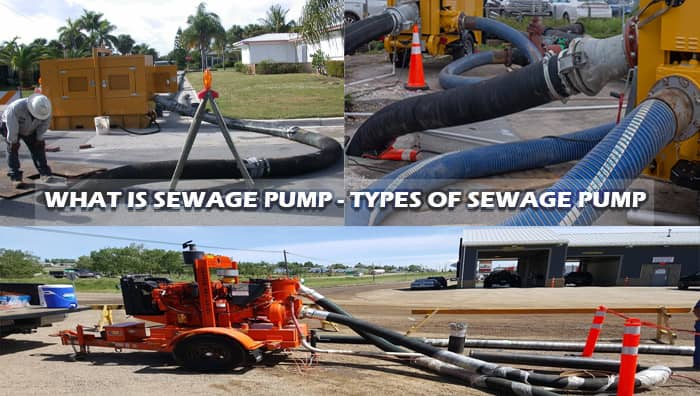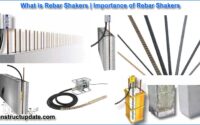All About Sewage Pump | Sewage Pump Types | Advantages and Disadvantages
What is a sewage pump?
A sewage pump is a machine that moves liquid and solid sewage from one place to another. In the majority of residential applications, sewage is pumped from a sewage basin to a sewer system or a septic tank, where it may contain soft sediments up to 2 inches in diameter. A sewage pump is set up at the bottom of the sewage basin.
The pump is also referred to as a submersible sewage pump because it is typically submerged. Sewage pumps come in automatic, manual, or dual-mode varieties. A dual-mode pump with a piggyback plug can be operated manually (bypassing the switch and plugging straight into the socket) or automatically (plugging via the floating switch and only operating when the switch is triggered). Due to the possibility of sewage overflow, it is generally not advised to utilize a manual sewage pump inside a sewage basin.
Solids can travel through sewage pumps‘ special centrifugal design without blocking them, making them a unique type of centrifugal pump. The impeller rotates as soon as the pump is turned on, creating pressure that forces water into the impeller and into the discharge pipe.
A 10- to 25-foot electric cord powers the sewage pump. Depending on the model, the voltage maybe 115, 230, 460, or 575 volts. The cast iron pump housing, which houses the motor and impeller, is built for long-term use.

Types of Sewage Pump
Effluent Pumps
The most typical type of pumps seen in small on-site installations are effluent pumps. They are designed to pump wastewater, which comes from septic tanks. The effluent is a comparatively clear liquid because the sediments have settled in the septic tank. Effluent pumps may pump at higher levels and with more efficiency than other sewage pumps since they do not need to handle sewage solids.
Solid Handling Pumps
These pumps, which are also called sewage ejector pumps, are made to move untreated sewage. The only pumps that should be used to pump raw sewage are those that can handle solids because most pumps cannot handle the amount of solids in raw sewage.
Grinder Pumps
A solid-handling pump is comparable to a grinder pump. It has the ability to pump untreated sewage. The grinder pump, on the other hand, cuts and grinds the solids into small particles before the sewage is pushed using rotating blades that resemble garbage grinders.
Advantages of Sewage Pumps
Sewage pumps are made to safely drain water that has accumulated in crawlspaces and basements and deposit it in a house’s wastewater system. Sump pumps are reasonably easy to use, but their installation is more challenging.
Here are the major advantages of having a sewage pump:
Prevent flooding damage – When severe rains cause a flood of water into your basement, it won’t take long for the floor to be covered by 15 inches of flood water, ruining nearly everything inside. This can be especially disastrous if you keep precious objects in the basement. This catastrophe is readily avoidable if there is a functioning sump pump.
Reduce the threat of mold and mildew – Mould and mildew will thrive in basements that are constantly damp due to water in standing pools. Both of them pose health risks in addition to being harmful to construction materials.
Reduce the risk of fire – The basement’s heating, water heating, and washing appliances will all be short-circuited by the water. So, water not only damages these expensive gadgets but also poses a fire risk. A sump pump will prevent water from endangering machinery that could start home fires.
Disadvantages of Sewage Pump
These are some drawbacks of the sewage pump.
- The pass’s charge is impossible to contain.
- This pump needs to be briefed in order to work.
- The pump in question is bounded.
- The pump’s edge will be harmed by some air brokerage on the pump side.
FAQ
1. How Does a Sewage Pump Work?
Sewage from your home is collected in a tank or basin by a sewage pump, commonly referred to as an ejector pump. The pump activates and forces the waste uphill to your home’s main sewer line when the waste reaches a particular level. The sewage then flows to a septic tank or the city line on the street as gravity takes over.
2. What are the uses of a Sewage Pump?
To move sewage liquids and solids from one location to another, a sewage pump is employed. Sewage that contains soft sediments up to 2 inches in diameter is often transferred from a sewage basin to a sewer system or a septic tank in residential applications. The sewage basin’s lowest point has a sewage pump installed.
3. Difference Between Sump Pump and Sewage Pump
A sump pump or drainage pump is used to pump clean fluids, but a sewage pump is typically needed to handle bigger solid particles. Sump pumps manage extra water to prevent flooding, whereas sewage pumps are made to handle sewage and pump it into the main sewer.
4. Difference Between Effluent and Sewage Pumps
An effluent pump and a sewage pump are fundamentally different from one another because effluent pumps are made to pump grey water with small amounts of solids, ideally less than 1/2 inch in diameter, whilst sewage pumps are made to handle solid human waste and sewage materials up to 2 inch diameters.
5. Sewage Ejector Pump Code Requirements
Unless otherwise allowed, the ejector pit must be at least 18 inches (457 mm) in diameter and 24 inches (610 mm) deep. The pit must be easily accessible and situated such that all drainage empties into it naturally. The ejector pit must be built out of materials that have been approved, such as tile, concrete, steel, plastic, etc.




